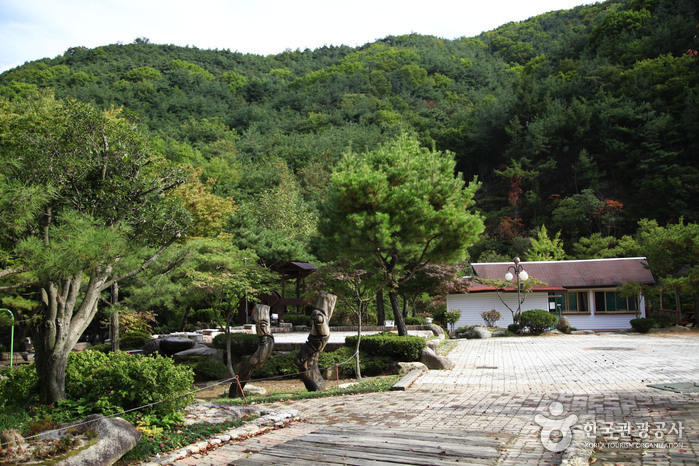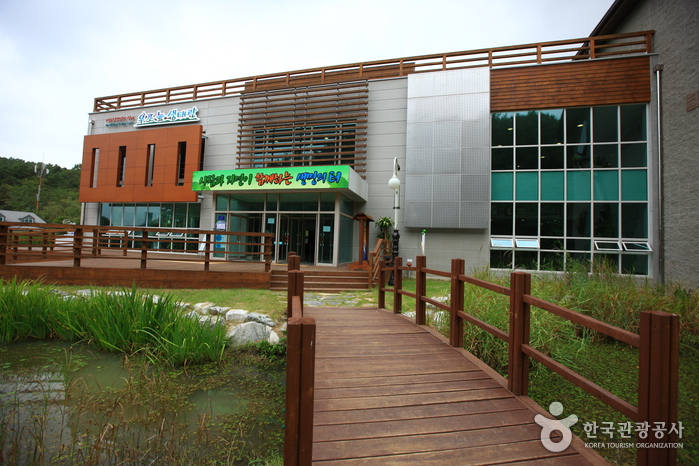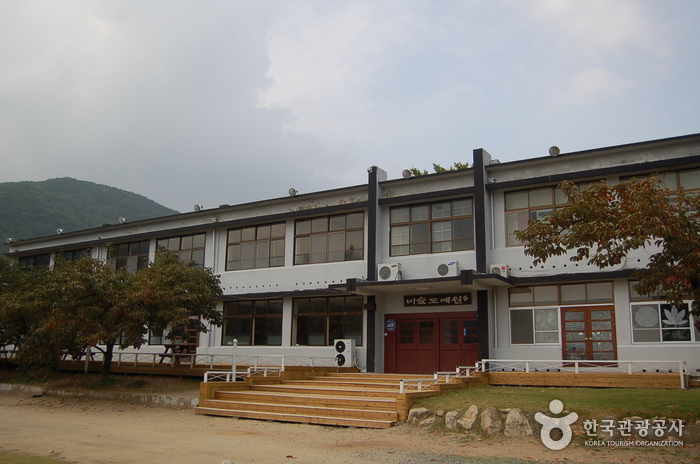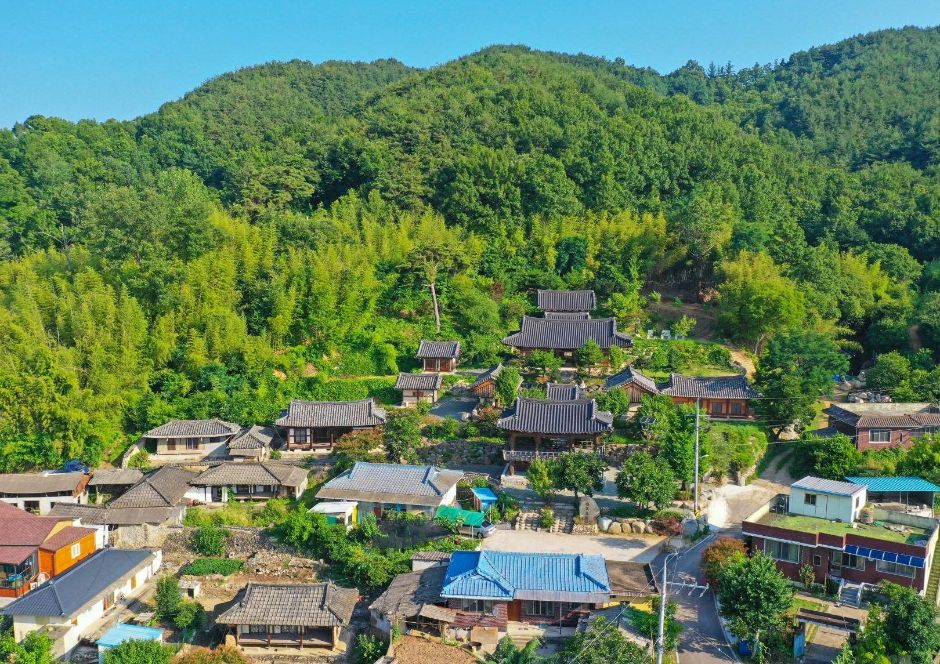St. Mary's Pine Forest Village (성모솔숲마을)
17.7Km 2024-02-08
166 Songnae-gil, Gakbuk-myeon, Cheongdo-gun, Gyeongsangbuk-do
St. Mary's Pine Forest Village, a serene retreat house under the Catholic Archdiocese of Daegu, was initially established as a haven for the sick and those seeking spiritual retreats. However, it is now open to all, regardless of their reason for visiting. A mass is celebrated at eleven every morning in the church, welcoming both Catholics and non-Catholics alike. Visitors who are not of the Catholic faith are also encouraged to explore the church, or enjoy a peaceful stroll through the surrounding pine forest. The village comprises several facilities, including the Pine Forest Church, the Way of the Cross, a restaurant, a café, and the Yedam Gallery, which is located within the café.
Midam (미담)
17.8Km 2024-03-20
2-13 Sanghwa-ro 9-gil, Dalseo-gu, Daegu
Midam is a Korean restaurant renowned for delivering the most authentic Korean flavors through its hanjeongsik (Korean table d'hote). They specialize in serving healthy medicinal food, using natural seasonings. The restaurant offers four types of hanjeongsik course: Soheon, Sohye, Inhyeon, and Yeheon. Additionally, their menu includes hanu bulgogi jeongsik (Korean beef bulgogi set menu), hanu modum gui (grilled assorted Korean beef cuts), yeonnipbap (lotus leaf rice), and matcha borigulbi jeongsik (barley-aged dried yellow croaker and matcha set menu). The establishment is exclusively comprised of private rooms, making it advisable to book a reservation in advance.
Gunbulo Bisl Resort Tourism Farm (비슬리조트관광농원 군불로)
17.8Km 2021-03-12
51, Naksan 1-gil, Cheongdo-gun, Gyeongsangbuk-do
+82-54-372-0900
Gunbulo Bisl Resort Tourism Farm is located at the foot of Biseulsan Mountain and is the largest natural farm in the Gyeongsangbuk-do area, spread over 24 acres. The resort's beautiful natural scenery, great facilities, and variety of experience programs make it a popular venue for corporate training, school field trips, conferences, and religious retreats; the youth camp program is especially popular. Visitors are advised to make reservations in advance.
Upo Wetland Eco Center (우포늪생태관)
17.8Km 2021-08-23
220, Uponeup-gil, Changnyeong-gun, Gyeongsangnam-do
+82-2-1330
Upo Wetland Eco Center is a wetland education center at the largest wetland in Korea. The center collects data and conducts research on various wild wetland animals such as birds, fish, mammals, amphibians, and reptiles, and displays these to the public as well as promotes the message that humans are also part of nature and educates visitors on how humans can live in harmony with nature.
To help visitors learn more about the ecological environment, the center consists of various galleries: Understanding Upo Wetland, the Four Seasons of Upo Wetland, Living Upo Wetland, Families of Upo Wetland, and Understanding the Ecological Environment. Each gallery exhibits dynamic models and videos, as well as hands-on interactive programs.
Hotel Crape 호텔크라페 성서점
18.2Km 2025-05-29
6-4, Seongseogongdan-ro 11-gil, Dalseo-gu, Daegu
+82-53-588-3300
Hotel Crape in Seongseo, Daegu, Gyeongsangbuk-do, is a boutique hotel near the Seongseo Industrial Complex. It offers a variety of room types and caters for both business travelers and family customers. The nearby Moda clothing outlet makes this a good base for shopping; Keimyung University Seongseo Campus (often used as a filming location) is 10 minutes away by car, as is the Keimyung Arts Center where visitors can enjoy concert performances. Nearby is Daemyeong Reservoir, whose reed fields are popular in the autumn.
Uniqlo - Daegu Daecheon Branch [Tax Refund Shop] (유니클로 대구대천)
18.6Km 2024-04-18
113, Jincheon-ro, Dalseo-gu, Daegu
-
Homeplus - Sangin Branch [Tax Refund Shop] (홈플러스 상인)
19.4Km 2024-04-16
183, Wolbae-ro, Dalseo-gu, Daegu
-
Bisl Pottery Studio (비슬도예원)
19.5Km 2025-01-09
787, Heolti-ro, Cheongdo-gun, Gyeongsangbuk-do
+82-54-371-5588
Located in Cheongdo-gun, Gyeongsangbuk-do, the Bisl Pottery Studio is run by potter Kim Byeong-Yeol. An old abandoned school was renovated into a serene studio where you can make your own pottery while taking in the beauty of the surrounding mountains.
Through the teaching of Byeong-Yeol, you'll be able to make your own cup, plate, or ornament. There are also hands-on programs such as natural dyeing and seasonal produce harvesting (potatoes, sweet potatoes, persimmons, strawberries).
The studio exhibits artwork such as Gyeoljeongyujagi, a type of pottery decorated with a mixture of glaze and gold powder. Other works of art include those painted with persimmon juice!
In summer, the Bisl Pottery Studio is especially popular among families as a vacation destination since there are accommodations and an outdoor swimming pool providing relief from the summer heat. There is also a large playground, where visitors can play sports and make campfires.
Keimyung University Dongsan Hospital (계명대학교 동산병원)
19.5Km 2025-10-23
1035 Dalgubeol-daero, Dalseo-gu, Daegu
Established in 1899 as Daegu's first Western medical institution, Keimyung University Dongsan Hospital is a cutting-edge, eco-friendly facility offering 37 specialties. It features top centers for cancer, robotic surgery, cardiocerebrovascular diseases, and organ transplants. In 2023, it won the Medical Korea Award for cancer care. The International Healthcare Center has been providing personalized services to international patients since 1967.
Saudang Head House (사우당 종택)
19.9Km 2025-12-05
54-4 Suryun-gil, Suryun-myeon, Seongju-gun, Gyeongsangbuk-do
Saudang Head House, located in Yundong Village in Seongju, Gyeongsangbuk-do, is the ancestral home of Kim Yong-cho, one of the founding contributors of the Joseon dynasty. The name Saudang is derived from the pen name of Kim Kwan-seok, who settled in Yundong Village. Since the scholar Kim Kwan-seok settled here during the mid-Joseon period, Yundong Village has remained a clan village of the Uiseong Kim Clan. Within the village are Seodeoksa Shrine, a historic monument, and 13 additional buildings for ancestral rites in honor the clan's ancestors. For 600 years, Saundang Head House has continued the legacy as the ancestral home of Uiseong Kim Clan Commonly referred to as the "head house," this ancestral home is not only the residence of the firstborn but also serves as the spiritual pillar and center of the village. Additionally, it has been a place for nurturing future scholars, recognized for its influence on the local academic culture and its architectural preservation value, and is registered as a cultural heritage site of Gyeongsangbuk-do. Currently, the 21st head of the clan, Kim Gi-dae, and his wife, Ryu Jeong-sook, are safeguarding the ancestral home and promoting the fading culture of clan houses.




![Uniqlo - Daegu Daecheon Branch [Tax Refund Shop] (유니클로 대구대천)](http://tong.visitkorea.or.kr/cms/resource/37/2888537_image2_1.jpg)


 English
English
 한국어
한국어 日本語
日本語 中文(简体)
中文(简体) Deutsch
Deutsch Français
Français Español
Español Русский
Русский